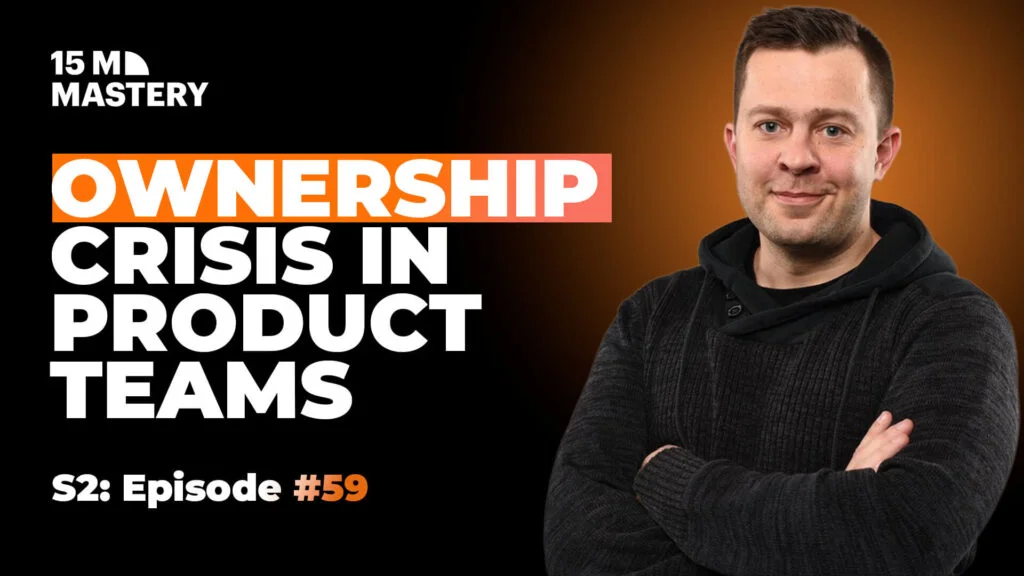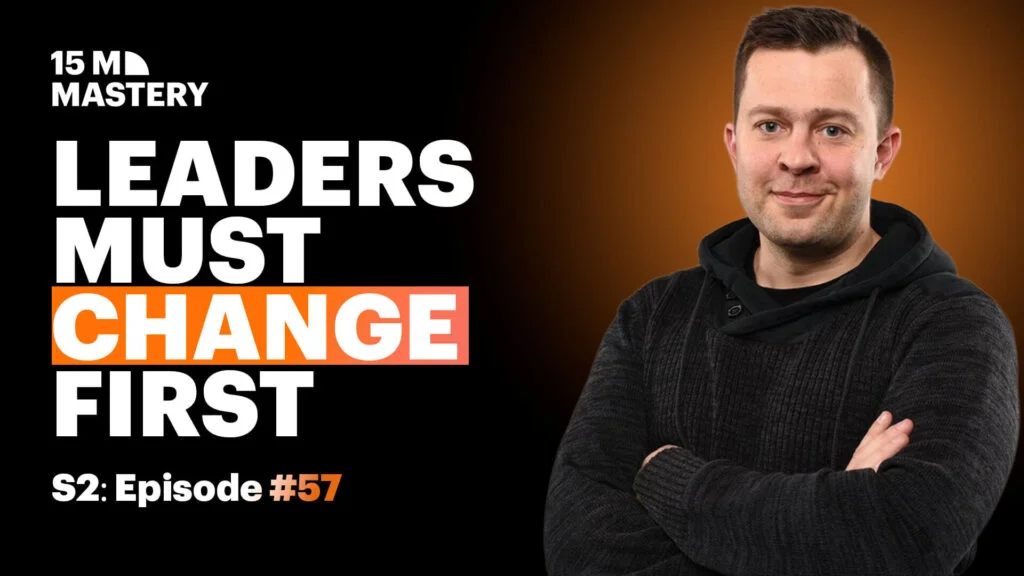From Commodities to Communities: Why iGaming Needs Emotional Products, Not Just Features
But what if the real key to long-term growth wasn’t a better campaign or feature, but a better connection with your user? That’s where Serhiy Berezhnyy comes in. Former CPO at Parimatch and product advisor across wellness, entertainment, and gaming, Serhiy has seen how product thinking can create more than just conversion, it can build meaning.
In this 15M Mastery episode, Serhiy joins our host Dmitry Belianin to break down what iGaming can learn from fitness apps, brand mythology, and emotional product design. It’s a conversation that moves past vanity metrics and asks a deeper question: what kind of relationship do you want to build with your users, and what does it take to earn it?
Wellness teaches what iGaming forgets: intention
When asked what iGaming could learn from wellness platforms, Serhiy flips the question entirely.
“I would say, when I joined the wellness area, it’s vice versa,” he begins. “Wellness and fitness have a bigger gap than entertainment. If you open Netflix or your favorite casino brand, you can do everything sitting on a sofa. Wellness requires you to stand up, sweat, reflect on your day.”
That friction, he argues, is what gives wellness products their strength. “Wellness products have a goal,” he explains. “Unlike gaming, which doesn’t have a goal or a dream. If we remind users about the goal or a way to the goal, it would be good.”
He points to poker as an outlier. “Poker has its strategies, going higher stakes, more skilled players, how to fight down streaks. That creates a space for a goal. And I think that’s one of the things that iGaming is totally missing.”
Brand consistency is your only real moat
Serhiy believes many casino and betting operators are now indistinguishable. Same platforms. Same features. Same CRMs. In a sea of sameness, brand is what creates real differentiation.
“Let’s be honest,” he says. “Many casino and betting operators are commodities. Everybody has the same sports events, the same slots, the same CRMs. It reminds me of how phones became commodities. 15 years ago, there were innovations. Now it’s the same form factor. What works today are stories, communication, brand.”
But it’s not about choosing between brand and performance. “I don’t think small tricks are unnecessary. Every percent of revenue on a commodity market is a huge advantage. That’s why you build your story and still fight in the background for every percent.”
It all comes down to consistency. “You create your own heroes, your own clients, your own emotional connection. Then you ask: is this aligned with our brand? No? Let’s not do it. Even if it takes more time. Even if we lose money. We must be consistent.”
A dashboard is not a conversation
When product teams say they’re data-driven, Serhiy always asks the same question: when was the last time you spoke to a user?
“Do you know what problems they have? The support team sends something? Or you look at metrics in the dashboard?” he asks. “All product managers have dashboards for everything, except people.”
He shares a story about a team struggling with user retention on their app. “They said, ‘It’s more convenient to play on the web.’ I said, ‘That’s suspicious. Talk to them.’ They spoke to 15 people and found 4 or 5 key issues. That’s it.”
He sees this mistake across industries. “There is no rationale to play gambling,” he says. “This is fun. This is emotions. If you lose that connection, you’re out of business.”
Most iGaming brands don’t have a real mythology
What’s missing from most iGaming platforms isn’t UX or CRM. It’s narrative.
“For me, a very good explanation came from Simo Tuelthack. Brand is not a logo or name. It’s how we set values and communications for customers,” Serhiy says. “If you say you’re a customer-oriented brand but your support takes two hours or sends a generic CRM bar, you’re not.”
He believes successful brands act like cultures, not campaigns. “You should say: this is the way we are expected to behave. We create our own heroes. Our own emotional connection. Then when a feature comes up, we ask: is this aligned with our brand? If not, don’t do it. Be consistent. Like raising a child, your actions teach more than your words.”
The future of product leadership is emotional intelligence
As the conversation closes, Serhiy returns to his experience in the wellness sector, not to draw a contrast with iGaming, but to issue a challenge.
“Wellness apps start with emotions. ‘I want to be fitter, go on a date, climb stairs without losing breath.’ Then they build the rationale,” he explains. “You turn that emotional trigger into rituals.”
He offers a small product idea with a big impact: “What if you asked users, how much time did you play today? How many spins? You make it funny. But you move them from unconscious to conscious behaviour. That’s the first step to responsible gaming.”
For Serhiy, the point isn’t about copying wellness, it’s about applying intention. “In weight loss and fitness, it’s the same. You start with a fever, the two-week vacation panic, and you turn it into rituals. That’s what we can learn.”
The Emotional Edge of Product Strategy
From dashboards to dialogue, features to feelings, Serhiy Berezhnyy offers a different vision of product leadership, one where growth isn’t about what you build next, but what you mean to the people you build for.
In iGaming’s race to personalise, optimise, and monetise, the real winners may be those who remember the basics: products are relationships. And relationships, just like games, are only fun when they feel real.



